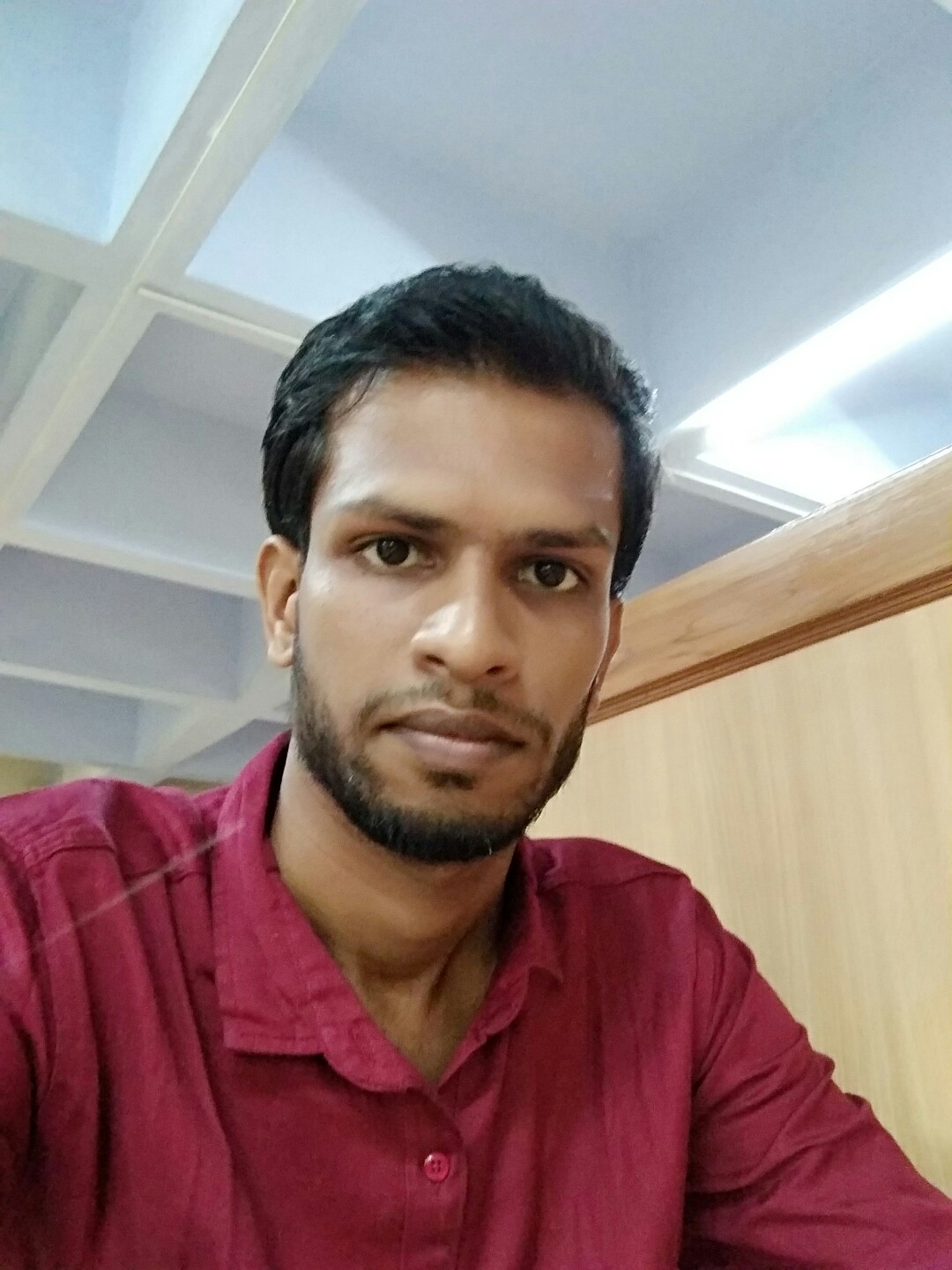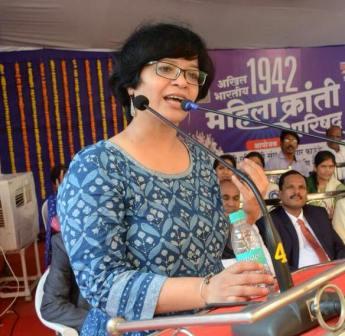Raju Chalwadi
 This August 15th marked the completion of 70 years of Independence. The preamble of the constitution way back in 1950 defined India as a place where Justice, Liberty, Equality and Fraternity will prevail and more specifically a place where oppressed sections will live a life with dignity. But, looking at the current condition any learned person can say that we have failed terribly in attaining the goal of just society. Why did we not become a land of equality as envisaged by our founding fathers?
This August 15th marked the completion of 70 years of Independence. The preamble of the constitution way back in 1950 defined India as a place where Justice, Liberty, Equality and Fraternity will prevail and more specifically a place where oppressed sections will live a life with dignity. But, looking at the current condition any learned person can say that we have failed terribly in attaining the goal of just society. Why did we not become a land of equality as envisaged by our founding fathers?
The answer is clear: The governing class who historically constitutes the ‘morally superior’ group did not consider “others” as worthy of living a dignified life. The basic principle on which the social relationships of people of India are based is “Caste.” Repulsion is the principle behind caste relations. Hence, by its very nature, i.e., antagonistic relationship defines one’s thoughts and actions against ‘others.’ With this relation in mind, we can say that the progress of one social group morally hurts the others. Hence, providing equal opportunity to all is not in our psychology. And it is this ‘psychology of getting hurt’ that we have not yet been successful in creating a just society.
In this battle of not providing a dignified life to the “others” we have shamefully created an ‘army of second class citizens’ within a nation. The basic problems still remain unresolved; for instance, the question of land distribution still remains the basic concern for the upliftment of the most discriminated section of society, the Dalits, who account for 16.6 per cent of the population. As per the 70th round of Land and Livestock Holdings Survey (L&LS) conducted in 2013, in the state of Haryana, Punjab and Bihar, for instance, proportion of Dalits is 39.85%, 17.54% and 16.36 % in the total state population but their land share is 2.80%, 1.04% and 3.10% respectively. Whereas in the same states, the populations of (OBC-Gen) were 60.06 %, 82.34 % and 79.91 % respectively but their share in land is 97.17%, 98.06% and 96.63% respectively. In such a scenario, where the shares in land resources are extremely unequal, degradation of Dalits at the hands of the dominant community becomes easier. Land in our society not only provides an economic status but more importantly it gives a social status. In such conditions, the unfinished agenda of land reforms is nothing but a strategy of morally superior class to maintain its ‘status.’ It was this morally superior class who did not disown their privileges after independence unlike their counterparts in France and Japan. Apart from this, even after 70 years of independence, Dalits are being killed for no reasons. For instance, they are being killed for using a ringtone which praises Ambedkar in their phones and for using flour mill before an upper caste.
The second group which faces similar or equal amount of discrimination in the Indian society are women who constitute almost half of the country’s population. As per NCRB, in the year 2015, a total of 34,651 cases of rapes were registered and the cases of gang rape were 2,113. This shows the strong element of of masculine culture which still exists in our minds, apart from showing how our society has failed miserably to provide bodily independence to half of its population. Although the number looks high but any learned person who understands social relations in our society can say that these numbers are highly under-reported. Our society does not give prominence to individuals, instead social honor is more important, hence in most of the cases, these crimes are not reported. In the year 2015, a total of 7,634 women died in the country due to dowry harassment, even though the institution of dowry as an evil social custom is taught from school itself. This shows that the secular institutions such as schools, colleges and universities have not been able to create a socially obliged and sensitive pool of citizens and it also shows the heinous face of our ‘tolerant’ society. Marriage as a ceremony in Indian society has always been an occasion for the groom’s family to extract as much wealth as they can.
Apart from this, honor killings in the case of inter-caste or inter-religious marriages are widely prevalent throughout the country. In most of the cases, women become the victim of such killings. The registered honor killings cases in 2015 according to NCRB was 251 which seems to be highly under-reported. Mate selection for marriages is still largely a social responsibility and an individual’s selection is not given prominence, given the chances of he/she crossing caste and religion boundaries. Our inability to provide equal status to each individual is the biggest failure of our democratic setup. Similarly, inhuman treatment is given to the manual scavengers in the country. Despite there being a prohibition on the occupation, the SECC data of 2011 reported that around 1,82,505 households are engaged in manual scavenging and most of them again belonging to the oppressed section of society. In a country with 84 billionaires with a collective wealth of USD 248 billion, the prevalence of such practices proves that Manu is still alive.
After independence, several institutions of excellence were set-up which majorly benefitted generations of this morally superior class – prominent among them were IITs, and IIMs. Until the Mandal revolution, the students of marginalized sections had a minuscule share in these institutions of higher learning. The leaders of post-independence instead of focusing on improving the schooling system, especially public schools where the children of oppressed class study, concentrated on creating higher learning institutions which were the need of this morally superior class. Similarly, in order to benefit this class, agriculture and the manufacturing revolution was undermined and high capital intensive industries were given focus in the pre liberalization period. After liberalization in 1991, the service sector was given prominence. Both these sectors provided white collar jobs to the same pure class, not the masses. Such policies not only undermined the promise of the Constitution with regard to justice and equality in economic and social spheres but also raised the social status of so called ‘morally superiors’ up to the next level.
The failure of the Indian state to solve the problem of caste and wealth based inequality has already resulted in the creation of the Naxalite movement – which aspires to get justice through taking up arms. It was the creation of our State and Society and it cannot be solved until the basic questions of land, the capture of resources by corporates and atrocities by upper castes are dealt with. The atrocities committed by the armed forces on tribal women have further escalated the tension. Similar is the problem with Kashmir – we love the land not the people. Looking into the current scenario, the solution provided by BR Ambedkar looks precious. In his resignation speech, he said “My view has always been that the right solution is to partition Kashmir. Give the Hindu and Buddhist parts to India and the Muslim part to Pakistan as we did in the case of India.” We have taken Kashmir as our ‘saakh ki baat’, we want to get it according to our own rule, not the Kashmiris’. Had the Indian government provided them with basic facilities and freedom, the situation would not have become this worse. It is not hard to find a placard or a wall which has ‘India go back’ written on it, anywhere in Kashmir We don’t enjoy their trust due to our own doings in the past. Hence, undoing the past through rational and sensitive actions in both the cases remains the only solution.
In the year 2015, as per the NCRB data, a total of 12,602 farmers committed suicide, the main reason being indebtedness and crop failure. At a national level, 52% of farm households are indebted with the level of indebtedness reaching alarming high in some so-called progressive states such as Andhra Pradesh and Tamil Nadu where 93% and 82.1%, respectively, of farm households, are indebted. This indebtedness is largely due to the failure of the government to prevent the rise in input costs and crop failures due to droughts. Even today 52% of the land is dependent on monsoon and is not irrigated. The basic facilities of irrigation, cheap inputs, storage facilities, and access to markets can solve the farm crisis but it has not been done till now.
Such is the failure of our governing and morally superior class in solving the basic social and economic issues, even after seven decades of independence. We would be cherishing an illusion if we think that we are living in a democracy because democracy according to BR Ambedkar is ‘Essentially an attitude of respect and reverence towards fellow men’ which we lack even today. The prevalence of evil social institutions and lack of sensitivity toward “others” are the prime examples of our failure in creating an attitude of respect toward fellow citizens. Further, he said, ‘the roots of democracy are to be searched in social relationship, in terms of the associated life between the people who form the society.’ Such was the model of Democracy which the leaders envisaged.
Caste, Class and Gender are the basic social contradictions which need to be resolved before embarking upon any grand project of ‘transforming India’. The sooner we realise this, the better it would be for our efforts to reach the stage where can call ourselves a Democratic society. Had we done land reforms and annihilation of caste and solved the unequal gender relations, the country called India would have been a different place.
~~~
Raju Chalwadi is a Ph.D. Candidate in the Humanities and Social Sciences Department, IIT-Bombay. He also holds a Master’s degree in Development Studies from the Tata Institute of Social Sciences, Mumbai.









